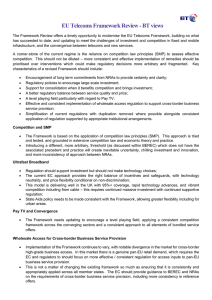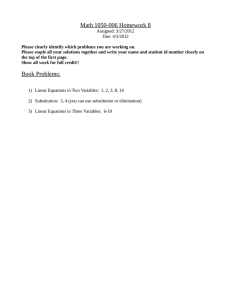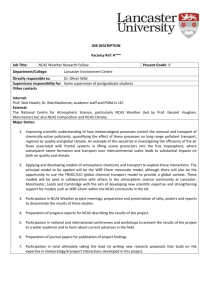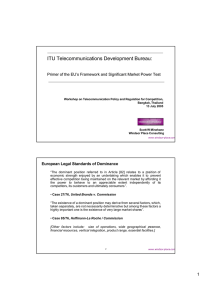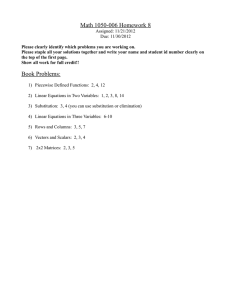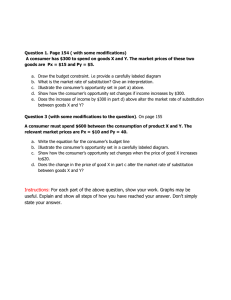Competition law aspects of the new Regulatory Framework Lambros Papadias EC Commission
advertisement
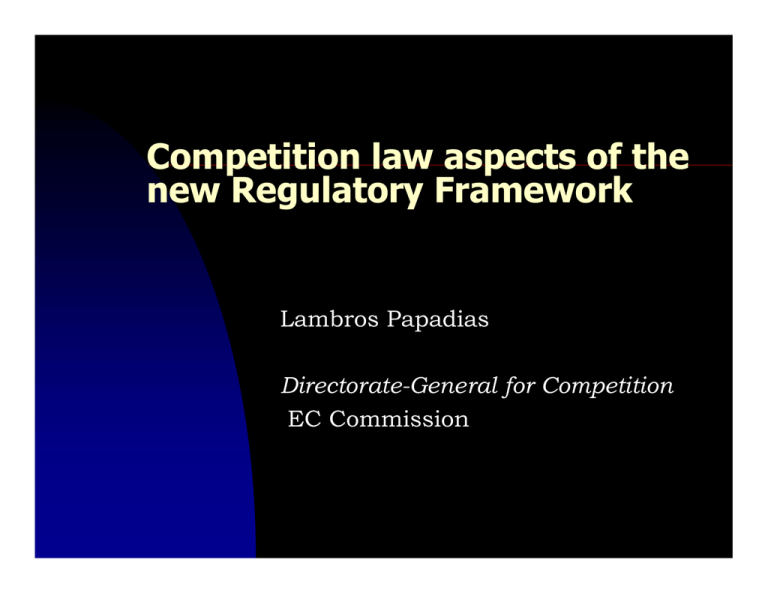
Competition law aspects of the new Regulatory Framework Lambros Papadias Directorate-General for Competition EC Commission The Competition aspects of the Framework Directive (I) ! ! ! The main provisions of the Directive: Article 14 and Articles 15-16 The principle: aligning ex ante regulation on general competition law: Adoption of the dominance concept of Article 82 (single and joint dominance). Markets to be defined in accordance with competition law principles. The Competition aspects of the FWD (II) ! ! Advantages: NRAs would be able to rely on 40 years of competition law experience by the Commission and on a solid, rich and authoritative jurisprudence by the Court of Justice. Safeguards: Article 7 of the FWD provides for a notification mechanism from NRAs to the Commission of draft regulatory measures involving issues of market definition and dominance. Commission to ensure consistency The Competition aspects of the FWD (III) ! Articles 15-16: Market Analysis Procedure " Publication of a Commission Recommendation on Relevant Product and Services Markets " NRAS together with the NCAs would carry out a market analysis on the basis of this Recommendation (Article 16) " Need for Commission’s prior approval (Article 7 of the FWD) if use by a NRA of a different market definition " If the market is pan-European, the NRAs concerned should jointly conduct market anal sis and decide on the appropriate The Competition aspects of the FWD (IV) ! ! Ex ante obligations are only imposed if, following a market analysis, the market is “effectively competitive”, that is , there is no single or collective dominance The Commission has published “Guidelines on Market Analysis and the Calculation of SMP” in order to assist NRAs . The Guidelines: in particular: market definition ! ! ! Two main competitive (price) constraints: demand-side and supply-side substitution One way to assess demand and supply-side substitution is to apply the “hypothetical monopolist test” (SSNIP) In practice, the SSNIP test should apply when no other available data to measure demand and supply substitution The Guidelines: a) product market definition ! ! ! Grouping together products or services that are used by consumers for the same purposes (end use) What counts most: physical characteristics of the product, consumer’s perception of their use, different pricing models and offerings, technological convergence etc. Where possible, market survey should be tested against the SSNIP test (elasticity of demand and supply substitution) In particular: demand substitution ! ! NRAs should determine the range of products consumers will switch top in case of a relative (10%) price increase Consumer’s behavior may however be affected by significant switching costs (investments in technology) and lock-in situations In particular: Supply substitution ! ! NRAs should also take into account the likelihood that other undertakings may be in a position to enter the market following a relative price increase Required conditions: entry should be credible, feasible and likely to occur within a reasonable time-frame. Mere hypothetical supply-side substitution is not sufficient Geographic definition ! ! An area in which the conditions of competition are similar or sufficiently homogeneous and can be distinguished from neighboring areas where prevailing conditions of competition are appreciably different The SSNIP test is still an appropriate tool in measuring the geographical scope of demand and supply substitution Commission’s own practice ! ! ! ! Product market: in most cases two main markets, one upstream market (access to infrastructure) and one downstream market (provision of services) Further distinction between wholesale and retail markets Services often offered to different classes of users, residential and corporate users Commission’s own practice (II) ! ! ! ! Geographic market: Two main criteria: (a) the area covered by a network; (b) the existence of legal and other regulatory instruments, As a result markets can be global, panEuropean, national or even regional in scope markets can also be defined on a route by route basis SMP assessment ! ! ! The starting point :the jurisprudence of the CFI/ECJ (power to behave independently of competitors/customers) the necessary adjustment to be made within an ex ante environment (time frame, future developments etc) the role of NCAs Single dominance: Criteria to use ! ! ! ! Not a single conclusive criterion however, market shares are a useful starting point. In addition: market characteristics: barriers to entry/expansion, potential competition Is the notion of essential facilities relevant? Leverage of SMP ! ! ! ! The Tetra pak case leverage covers both horizontal and vertical markets however if SMP on main market, less incentives for leverage in neighboring, associated market Examples of associative links Joint / oligopolistic dominance ! ! ! The jurisprudence of the CFI/ECJ: collective dominance also covers “co-ordinated effects” the criteria proposed by the Commission in the Guidelines are now part of Annex II of the FWDirective The Annex II criteria are not cumulative but illustrative The role of the NCAs: Exchange of information ! ! “NRAs and NCAs should provide each other with the information necessary to apply the provisions of this Directive and the Specific Directives, in order to allow them to cooperate fully together. In respect of the information exchange, the receiving authority should ensure the same level of confidentiality as the originating authority”. (Recital 35 of the FWD) See also Article 3.5 of the FWD What Role for the NCAs? ! ! ! Increased direct and indirect involvement of NCAs in the wider telecom sector NCAs to guarantee the coherence between ex ante regulation and ex post competition law policy An important role in deciding whether regulation should be extended and cover more markets Epilogos ! ! ! A new innovative, technology-neutral regulatory approach Deregulation more likely in the future No more conceptual distortions between ex ante and ex post approach
